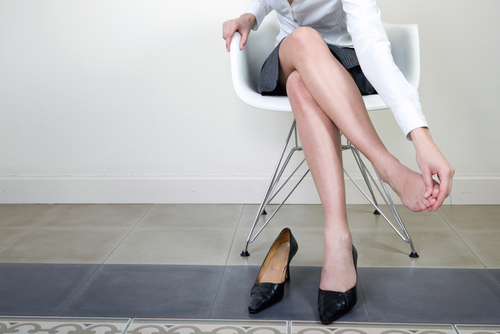Heels are a woman’s best friend. But can wearing high heels cause spider veins? Well, the shorter answer to the question is a YES.
Wearing high heels can affect your posture and result in back or neck pain. As a rich network of veins is present in your lower leg, high heels can negatively affect them. So, if you have a risk factor for spider veins, wearing high heels can further increase the risk.
Let’s understand more.
What Are Spider Veins?
Spider veins are purple, red, or blue veins that appear in the form of webs, thin lines, or branches. They occur when the valves inside the veins do not function normally.
Veins carry blood to the heart, and the valves prevent their backflow, allowing them to move in one direction. But when these valves can’t function, the blood flows back and pool inside the vein. Over time, the vein bulges and branches out, resulting in varicose veins.
Wearing High Heels and Spider Veins
Heels prevent the full range of motion of the ankle and foot while walking. When you walk with a full range of motion, seen while wearing flats, the calf muscle contracts and pumps blood towards the lungs and heart.
Wearing high heels restricts this action as you tend to stand on your toe, keeping your calf muscles contracted. And because of this, your calf muscles cannot pump blood efficiently. All this results in the pooling of blood in the leg.
If you have other risk factors, you are at a higher risk of blood pooling in veins and thus spider veins.
Risk Factors for Spider Veins
In addition to wearing heels, other factors that increase your risk for spider veins are:
- Genetics: If your parents have spider or varicose veins, you have a 70% chance of getting them, too.
- Pregnancy: Pressure from the uterus, hormonal changes, and increased blood volume during pregnancy increase the risk of spider veins during pregnancy.
- Weight: Being obese or overweight puts pressure on the veins, causing blood to pool in the veins,
- Job: If you have a job that requires you to stand for a long time, such as a teacher or surgeon, your valves become weak.
Final Thoughts
If you are at risk of spider or varicose vein, it is recommended to avoid or limit wearing high heels.


